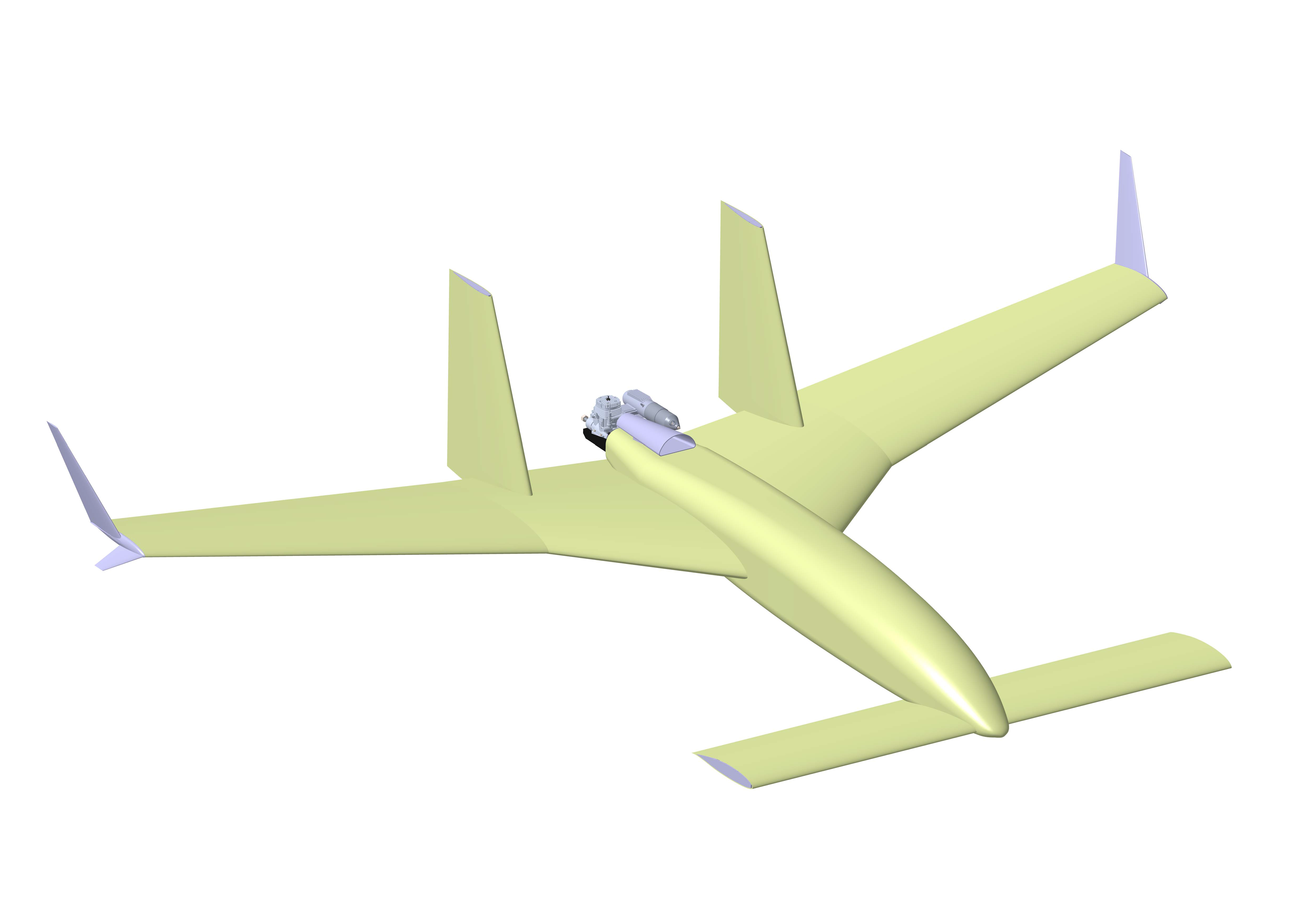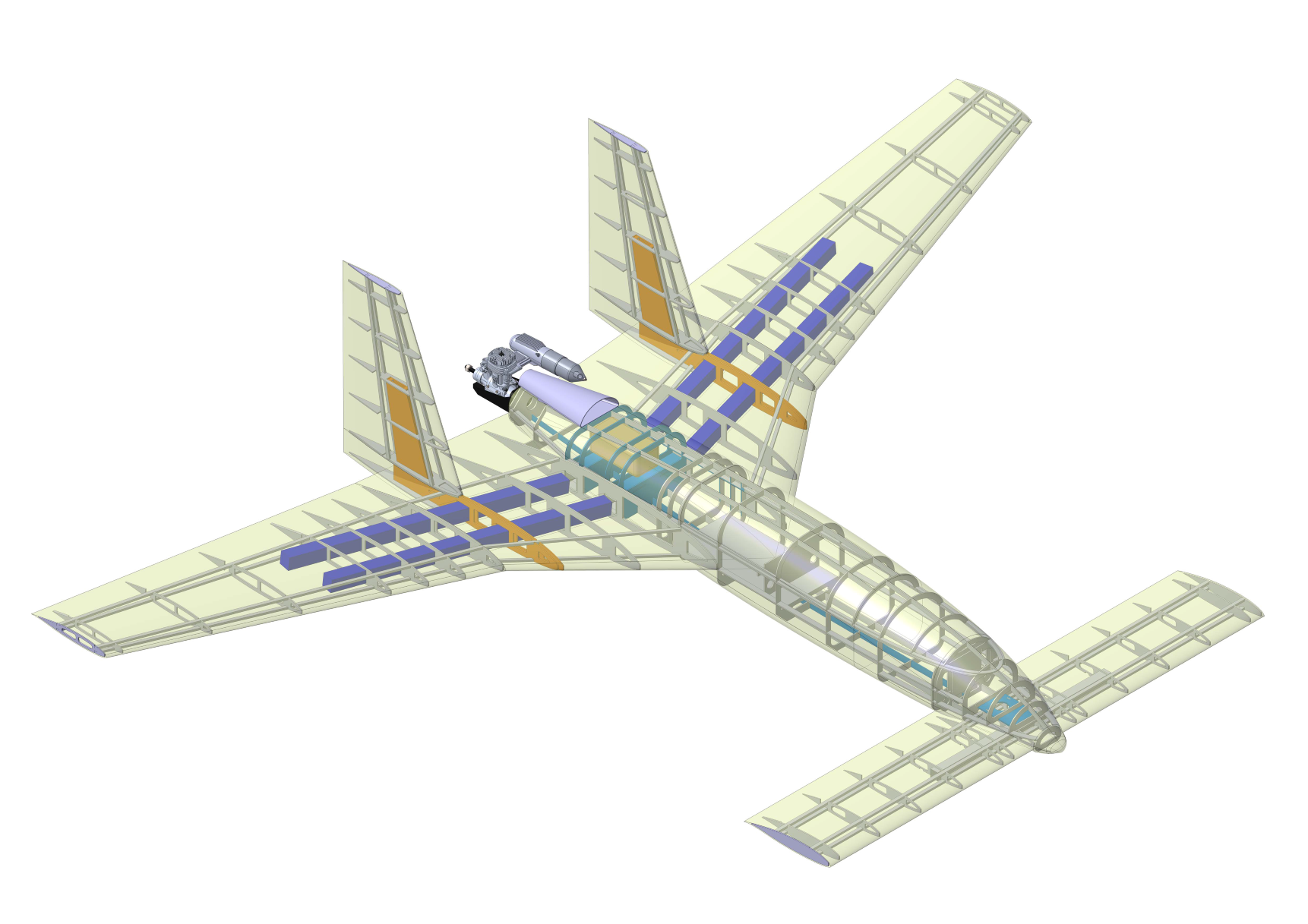I was the team leader in NCKU Unmanned Aerial Vehicle team from 2015 to 2017. During the 2 years, I was in charge of the drone design and team management.
Yee (翼)
The first UAV, Yee (翼), I designed was in 2016 for Taiwan UAV Competition. The UAV is a traditional inverse-T configuration with 2.6 m wingspan and an O.S. 61FX engine. The aircraft is 7 kg and can carry up to 5 kg payload. The materials we used are mostly balsa wood, fiber glass and some carbon fiber for critical structures, e.g. wing joints and landing gears.
This was my first designed aircraft and the performance is good but with some problem. For example, the tube between the fuselage and the tail are not stong enough and make the installed-angle slightly off. We had to tune the middle point of the elevator to make it follow our desinated cruise angle.
Storm Chaser (暴風艦)
The second UAV, Storm Chaser (暴風艦), I designed was in 2017 for Taiwan UAV Competition as well. This UAV was designed by me and another co-leader of the team. We discuss the goal and he mainly designed the aerodynamics parameters and I designed the whole CAD model based on his parameters in CATIA and manufacture process. The whole design was finished in 1 month and took 4 months to build and then tookoff.
Here’s the deisgn in CAD model. You can see the real aircraft is almost identical to my design with only slightly tweak to assembly easilier. After the CAD model was done, we transfer those parts into 2d dxg files and lasercut the fiber boards to get the structures. Then we used super glues to assembly the parts. For wings, we had to design a platform to handle the dihedral angle. Those non-gray color parts highlights carbon fiber parts and the rest parts are fiber glass.


The UAV is a canard configuration with 2.7 m wingspan and also equipped with an O.S. 61FX engine. This aircraft is 11 kg with theoretical up to 15 maximum takeoff weight. After several flight tests, we found the CG required 3 kg counter weight to reach out for its relatively short fuselage and less swipe angle. Also, the large wing surface causes the extra drag to accelerate. This characteristics shows in the video above. The stability and flight performance is close to our calculation.
In conclusion, the problem are the short fuselage make it harder to reach the desired CG and the small engine for the large wing surface, and was documented in our team log.
Overall, I really enjoy those days designing building the aircrafts and watch the very first test flight. The anxious feeling when taking off and the strong fulfillment after they land successfully. Those are the best time in my life. I hope I can again build something cool like these aircrafts in the future.